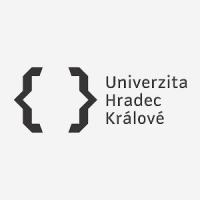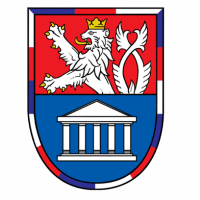Přednášky prof. Dominique Chateaua
Ve dnech 13. a 14. října 2025 vystoupí prof. Dominique Chateau s dvěma přednáškami zaměřenými na estetiku filmu a uměleckých instalací. První přednáška, konaná v budově FHS UK, analyzuje paměť filmu a diváckou rekonstrukci na příkladech Robbe-Grilleta a Spielberga, druhá v Čejka Gallery představí estetiku uměleckých dispositifů na příkladu kinových chat Agnès Vardy. Obě akce se konají pod záštitou projektu „Jazyk, obraz, gesto: podoby diskurzivity“.
Ve dnech 13. a 14. října 2025 se uskuteční dvě přednášky prof. Dominique Chateaua.
-
13. října od 17:30, místnost 2.21, budova FHS UK, Pátkova 2137/5
Přednáška s názvem Mémoriel du film et reconstitution spectatorielle. Relations d’ordre lointain dans L’Homme qui ment (Robbe-Grillet) et The Fabelmans (Spielberg) proběhne ve francouzštině s konsekutivním tlumočením do češtiny, které zajistí doc. Josef Fulka.
Přednáška bude také streamována prostřednictvím MS Teams. Informace k přihlášení budou zveřejněny dodatečně.
-
14. října od 17:30, Čejka Gallery, Kampus Hybernská, Hybernská 4
Přednáška Aesthetics of artistic dispositifs. The example of Agnès Varda's cinema shacks se uskuteční ve spolupráci se Společností pro estetiku.
Obě akce se konají pod záštitou projektu UNCE/24/SSH/026 – Jazyk, obraz, gesto: podoby diskurzivity.
Životopis
Dominique Chateau je emeritním profesorem na Université Paris 1 Panthéon-Sorbonne a šéfredaktorem časopisu Nouvelle Revue d’esthétique (Presses universitaires de France). Ve svém bádání se zaměřuje především na estetiku a teorii filmu. Mezi jeho díla patří například L'art comme fait social total, L'Harmattan, 1998, Cinéma et philosophie, Paris, Nathan, 2003 Sémiotique et esthétique de l'image : théorie de l'iconicité, Paris, L'Harmattan, 2007, L'invention du concept de montage, Amandiert, 2013, či L’art du fragment: Frontières apparentes & frontières souterraines, L'Harmattan, 2016. V nedávné době mu vyšla kniha The Fabelmans de Spielberg, essai de morpho-esthétique, édition Lambert-Lucas. V letošním roce chystá vydání Le Savant et le Scénariste. Des séries pour les méninges, Atlande.
Anotace první přednášky ve francouzštině
Mémoriel du film et reconstitution spectatorielle. Relations d’ordre lointain dans L’Homme qui ment (Robbe-Grillet) et The Fabelmans (Spielberg)
À deux films très différents, l’un, L’Homme qui ment d’Alain Robbe-Grillet (1968) qu’on peut rattacher au Nouveau Roman étant donné sa logique discohérente, l’autre, The Fabelmans de Steven Spielberg (2023), une biographie romancée qui montre l’initiation au cinéma de l’ater ego du réalisateur, j’applique ici une méthode d’analyse élaborée par François Jost et moi-même. Au cours de l’étude du film de Robbe-Grillet, il nous était apparu nécessaire d’y considérer le niveau de l’ordre lointain, des téléstructures. Or, l’étude du film de Spielberg, remarquablement, appelle cette même perspective et cela, d’autant que les deux œuvres, parce qu'elles ont trait chacune à sa manière à la mémoire du film, à la fois externe et interne, sollicitent une activité mentale de reconstitution de la part du spectateur.
Anotace první přednášky v češtině
Paměť filmu a divácká rekonstrukce. Nepřímé vztahy v Muži, který lže (Robbe-Grillet) a The Fabelmans (Spielberg)
Soustředím se na dva velmi odlišné filmy, totiž na Robbe-Grilletova Muže, který lže (1968), jejž lze vzhledem k jeho nesoudržné logice spojit s žánrem Nového románu, a na The Fabelmans Stevena Spielberga (2023), jenž představuje románově podanou biografii, vyprávějící o režisérově alter egu a jeho iniciaci do filmového umění. Uplatním na ně analytickou metodu, kterou jsem vypracoval spolu s Françoisem Jostem. Při zkoumání Robbe-Grilletova filmu se nám zdálo nutné uvažovat zde o rovině nepřímých vztahů, o telestrukturách. Je pozoruhodné, že zkoumání filmu Spielbergova připomene touž perspektivu, protože obě tato díla mají co do činění – každé svým způsobem – se současně vnější i vnitřní pamětí filmu, a žádají si tudíž od diváka duševní aktivitu spočívající v rekonstrukci.
Anotace druhé přednášky v angličtině
Aesthetics of artistic dispositifs. The example of Agnès Varda's cinema shacks
Drawing inspiration from theorists of the dispositif (Foucault and others), but adopting a different approach, one that is more social than ideological, I address here the « expanded field » (Rosalind Krauss) of contemporary art from the moment cinema became part of it. However, the transformation works both ways, because not only does film take its place in exhibitions, but filmmakers' creations extend to new kinds of special dispositifs, among which Agnès Varda's shacks are particularly noteworthy. For her, these shacks are at once an intimate space, an opportunity for retrospective reflection on her cinematic work, and a place for social interaction with the viewer, but they also contribute to what might be called the art of the shack.










